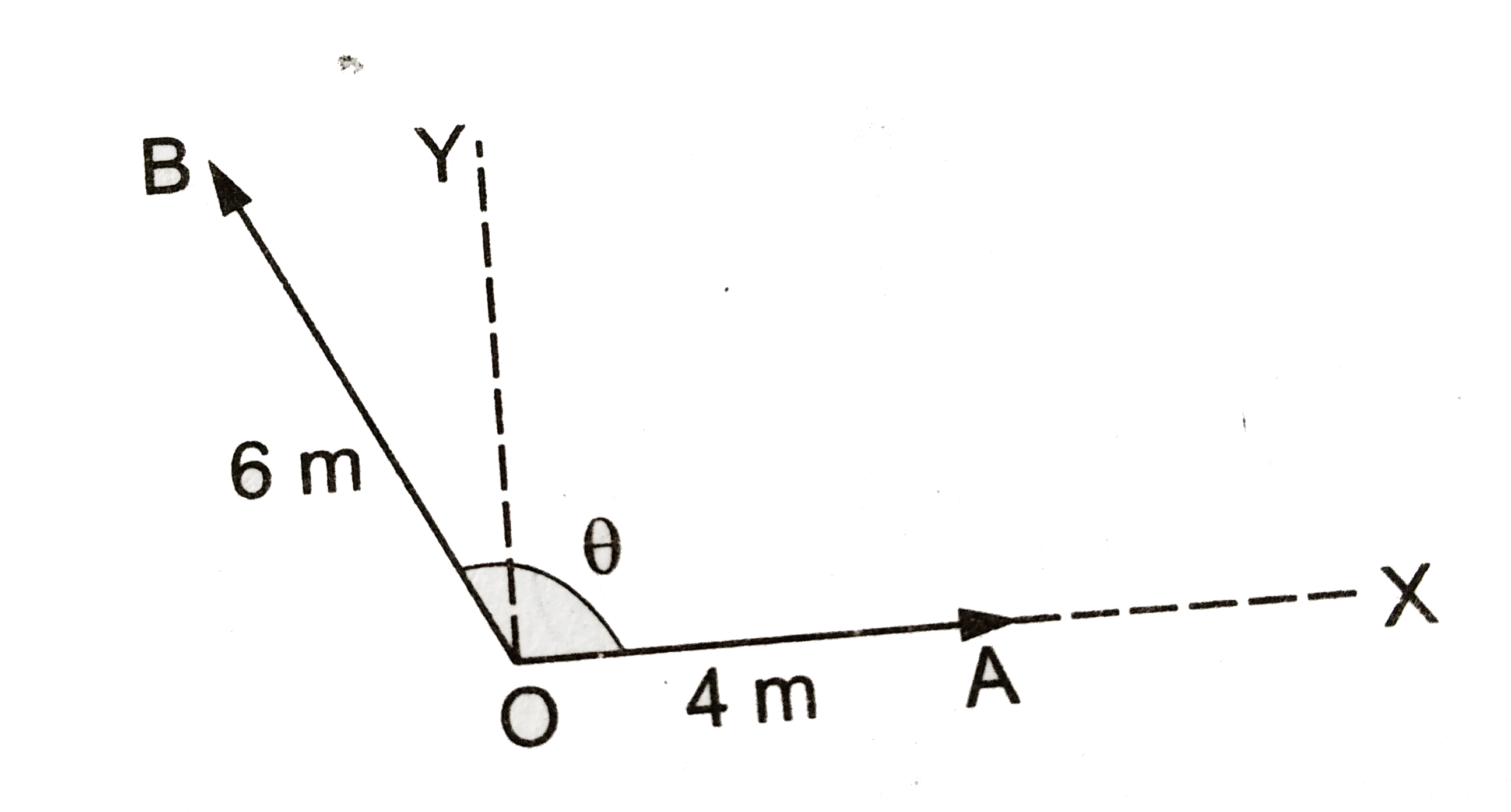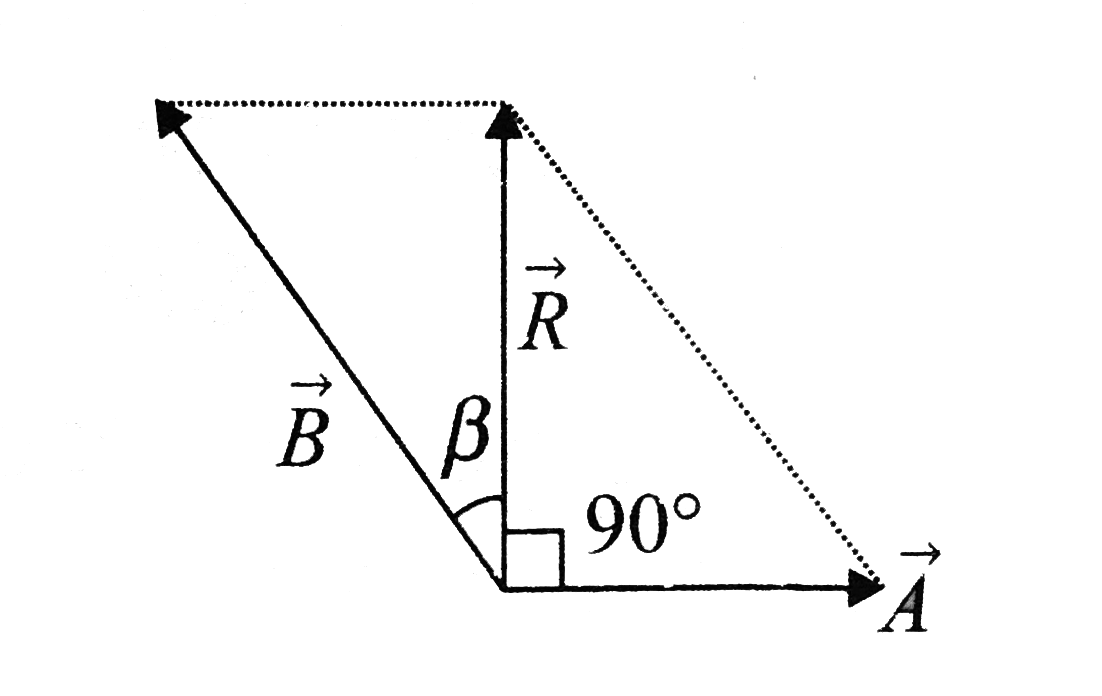The resultant of two vectors →P and →Q is →R. If →Q is doubled then the new resultant vector is perpendicular to →P. Then magnitude of →R is :-
P
(P+Q)
Q
(P−Q)
The correct Answer is:C
To solve the problem step by step, we will analyze the given information and apply vector addition principles.
Step 1: Understand the Given Information
We have two vectors, →P and →Q, whose resultant is →R. When →Q is doubled, the new resultant vector becomes perpendicular to →P.
Step 2: Write the Expression for the Resultant
The resultant vector →R can be expressed as:
→R=→P+→Q
We denote the magnitudes of these vectors as P and Q, respectively. Thus:
R=√P2+Q2+2PQcosθ
where θ is the angle between →P and →Q.
Step 3: Analyze the Condition When →Q is Doubled
When →Q is doubled, the new vector becomes 2→Q. The new resultant →R′ is given by:
→R′=→P+2→Q
The magnitude of the new resultant is:
R′=√P2+(2Q)2+2P(2Q)cosθ
This simplifies to:
R′=√P2+4Q2+4PQcosθ
Step 4: Use the Perpendicular Condition
Since →R′ is perpendicular to →P, the dot product →R′⋅→P=0. This implies:
P2+4Q2+4PQcosθ=0
Step 5: Solve for cosθ
From the equation P2+4Q2+4PQcosθ=0, we can isolate cosθ:
4PQcosθ=−(P2+4Q2)
cosθ=−P2+4Q24PQ
Step 6: Substitute cosθ into the Resultant Equation
Now we substitute cosθ back into the expression for R:
R=√P2+Q2+2PQ(−P2+4Q24PQ)
This simplifies to:
R=√P2+Q2−P2+4Q22
R=√P2+Q2−P22−2Q2
R=√P22−Q2
Step 7: Find the Magnitude of →R
To find the magnitude of →R, we need to ensure that the expression under the square root is non-negative. Given that the resultant R must be a positive quantity, we can analyze the conditions under which this holds true.
Conclusion
From the analysis, we find that the magnitude of the resultant vector →R is:
R=Q
We have two vectors, →P and →Q, whose resultant is →R. When →Q is doubled, the new resultant vector becomes perpendicular to →P.
The resultant vector →R can be expressed as:
→R=→P+→Q
We denote the magnitudes of these vectors as P and Q, respectively. Thus:
R=√P2+Q2+2PQcosθ
where θ is the angle between →P and →Q.
When →Q is doubled, the new vector becomes 2→Q. The new resultant →R′ is given by:
→R′=→P+2→Q
The magnitude of the new resultant is:
R′=√P2+(2Q)2+2P(2Q)cosθ
This simplifies to:
R′=√P2+4Q2+4PQcosθ
Since →R′ is perpendicular to →P, the dot product →R′⋅→P=0. This implies:
P2+4Q2+4PQcosθ=0
From the equation P2+4Q2+4PQcosθ=0, we can isolate cosθ:
4PQcosθ=−(P2+4Q2)
cosθ=−P2+4Q24PQ
Now we substitute cosθ back into the expression for R:
R=√P2+Q2+2PQ(−P2+4Q24PQ)
This simplifies to:
R=√P2+Q2−P2+4Q22
R=√P2+Q2−P22−2Q2
R=√P22−Q2
To find the magnitude of →R, we need to ensure that the expression under the square root is non-negative. Given that the resultant R must be a positive quantity, we can analyze the conditions under which this holds true.
From the analysis, we find that the magnitude of the resultant vector →R is:
R=Q
Topper's Solved these Questions
Similar Questions
The resultant of vectors −−→OAand−−→OB is perpendicular to −−→OA. Find the angle AOB.

View SolutionThe resultant of →P and →Q is →R. If →Q is doubled, →R is doubled, when →Q is reversed, →R is again doubled. Find P:Q:R.
View SolutionThe resultant and dot product of two vectors →aand→b is equal to the magnitude of →a. Show that when the vector →a is doubled , the new resultant is perpendicular to →b .
View SolutionIf →aand→b are two vector such that ∣∣→a+→b∣∣=|→a|, then show that vector |2a+b| is perpendicular to →b.
View SolutionThe resultant vector of →P and →Q is →R. On reversing the direction of →Q the resultant vector becomes →S. Show that R2+S2=2(P2+Q2)
View SolutionThe resultant →Pand→Q is perpendicular to →P. What is the angle between →Pand→Q?
View SolutionThe resultant of two vectors →A and →B is perpendicular to the vector →A and its magnitudes is equal to half of the magnitudes of vector →B (figure). The angle between →A and →B is

View SolutionIf ∣∣→P+→Q∣∣=∣∣→P−→Q∣∣ , find the angle between →P and →Q.
View SolutionIf →a,→b are two vectors such that ∣∣→a+→b∣∣=∣∣→b∣∣, then prove that →a+2→b is perpendicular to →a .
View SolutionIf two vectors →aand→b are such that ∣∣→a.→b∣∣=∣∣→a×→b∣∣, then find the angle the vectors →aand→b
View Solution
